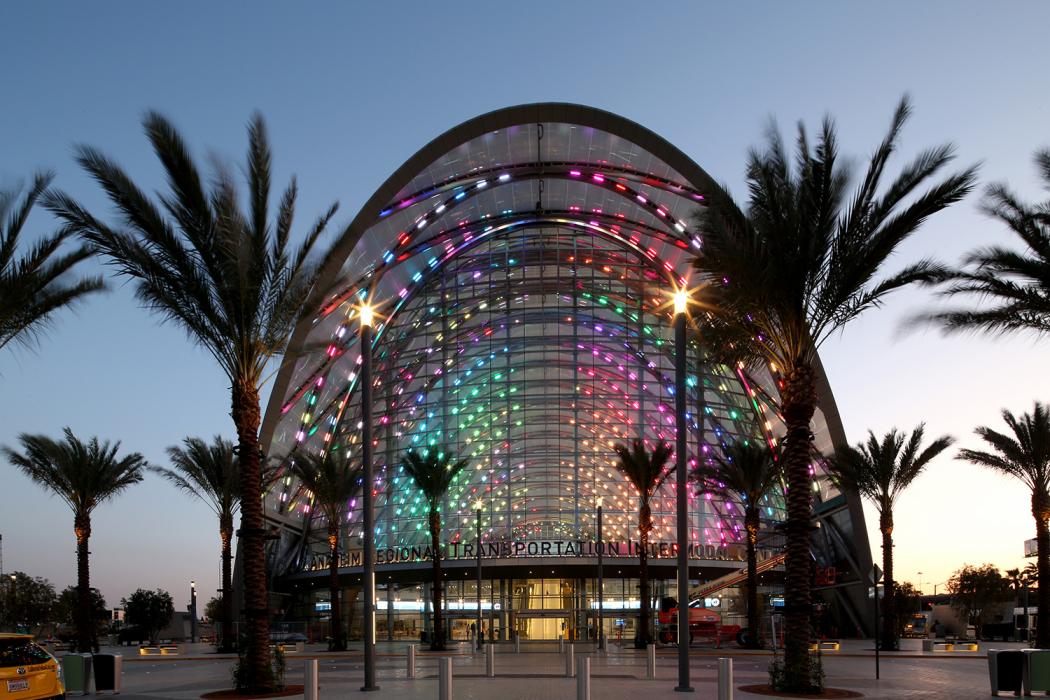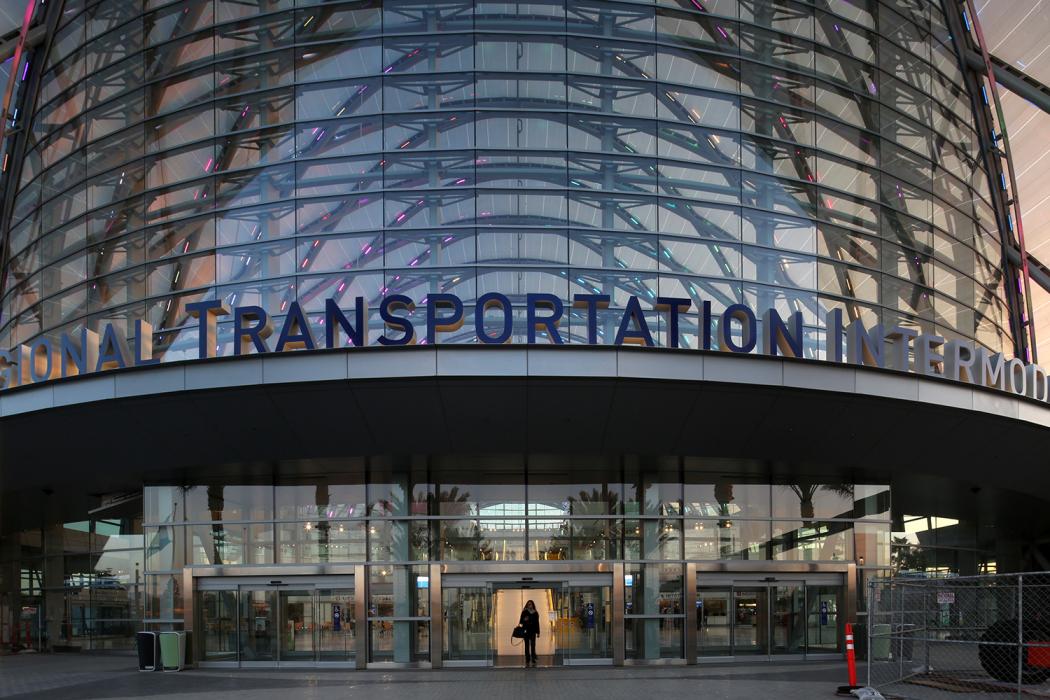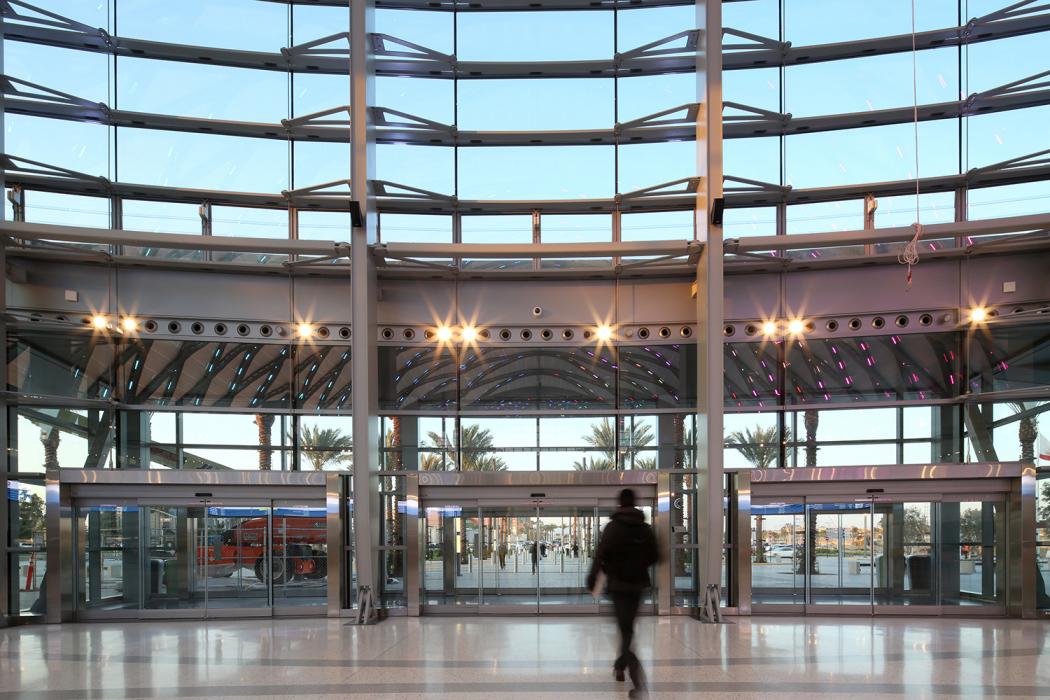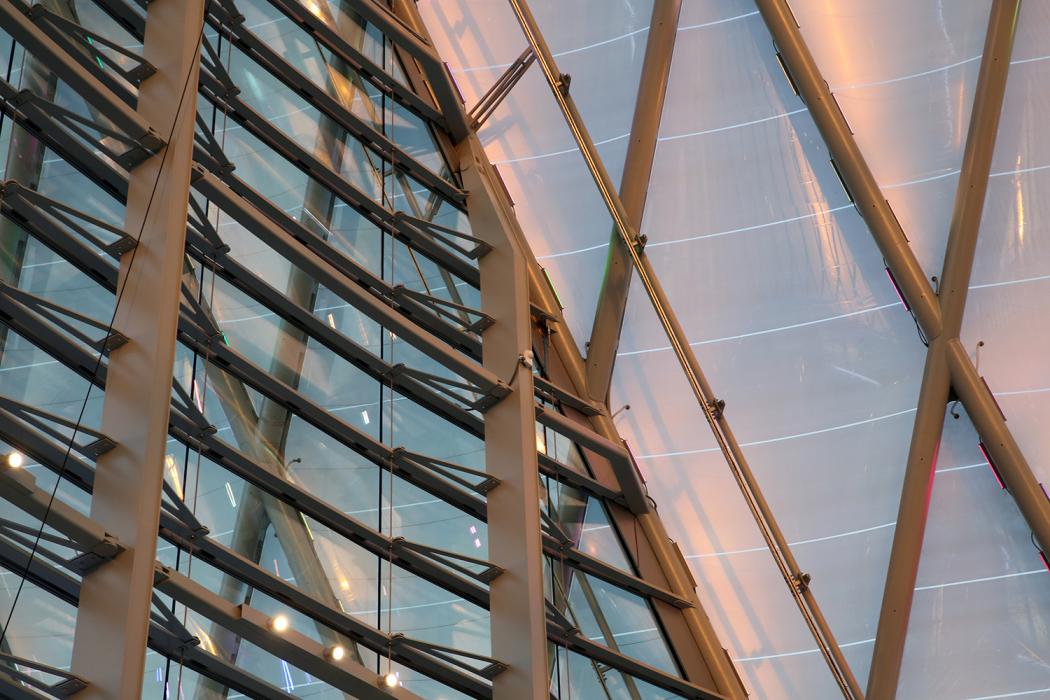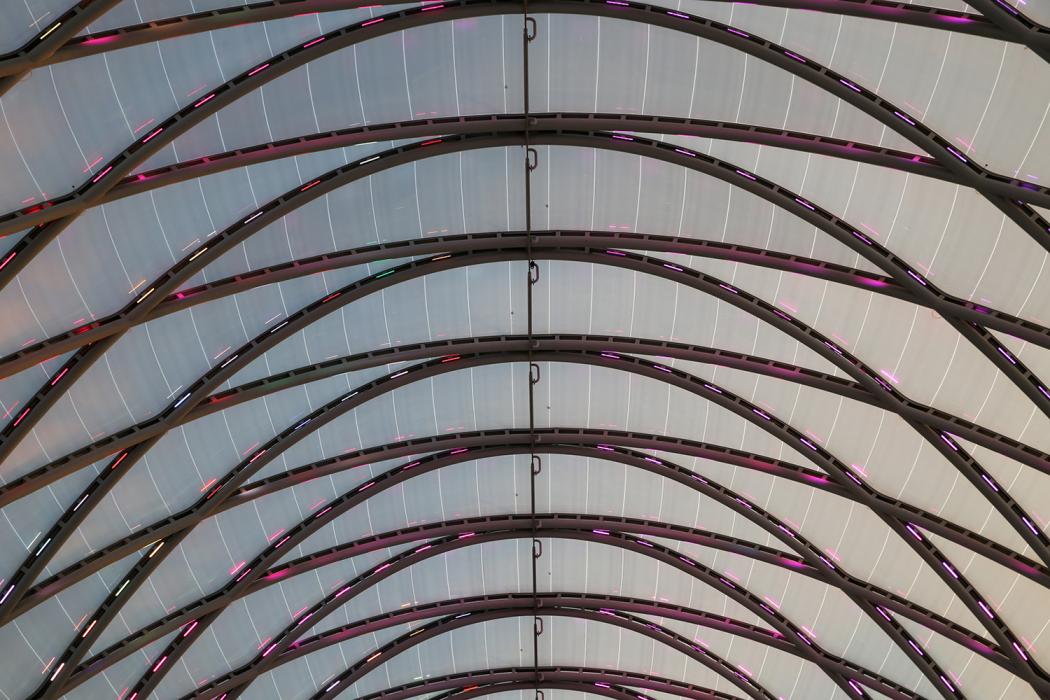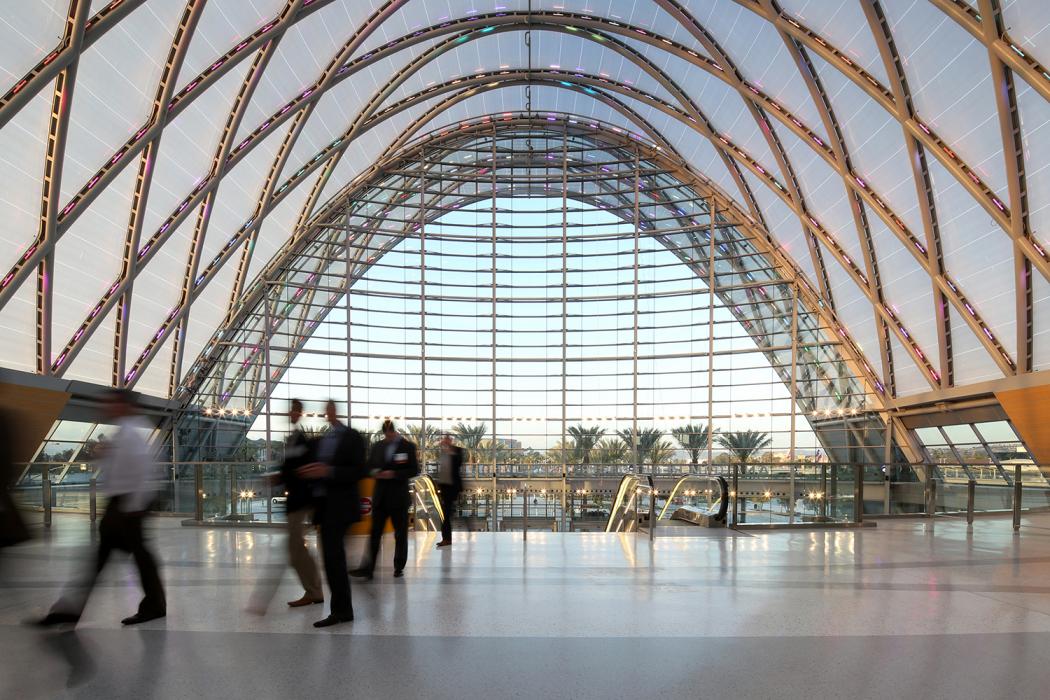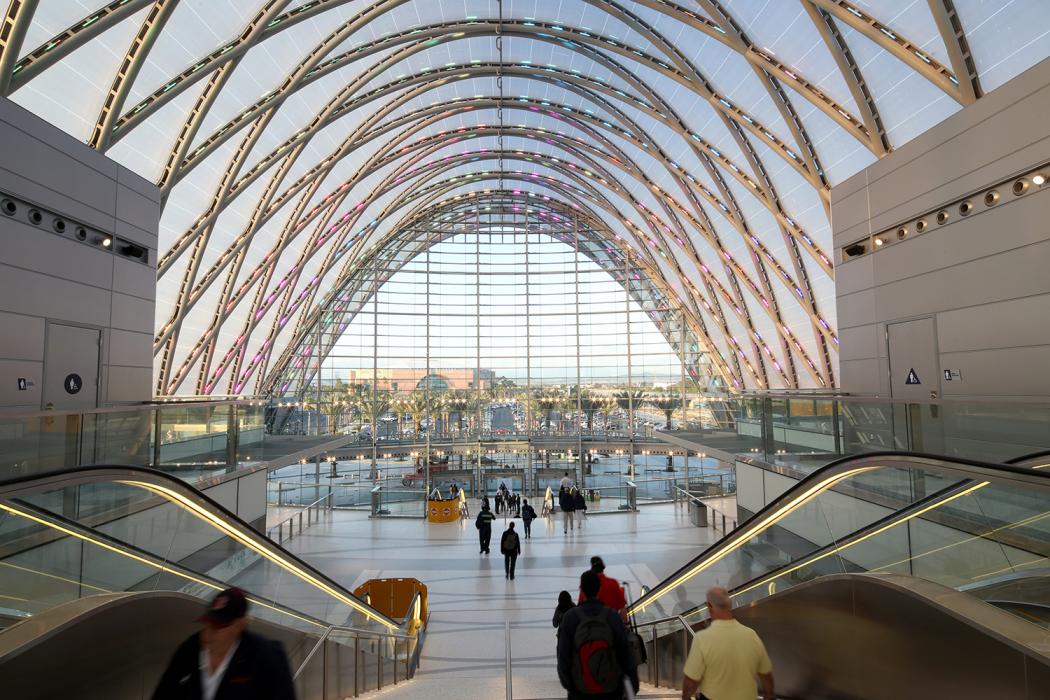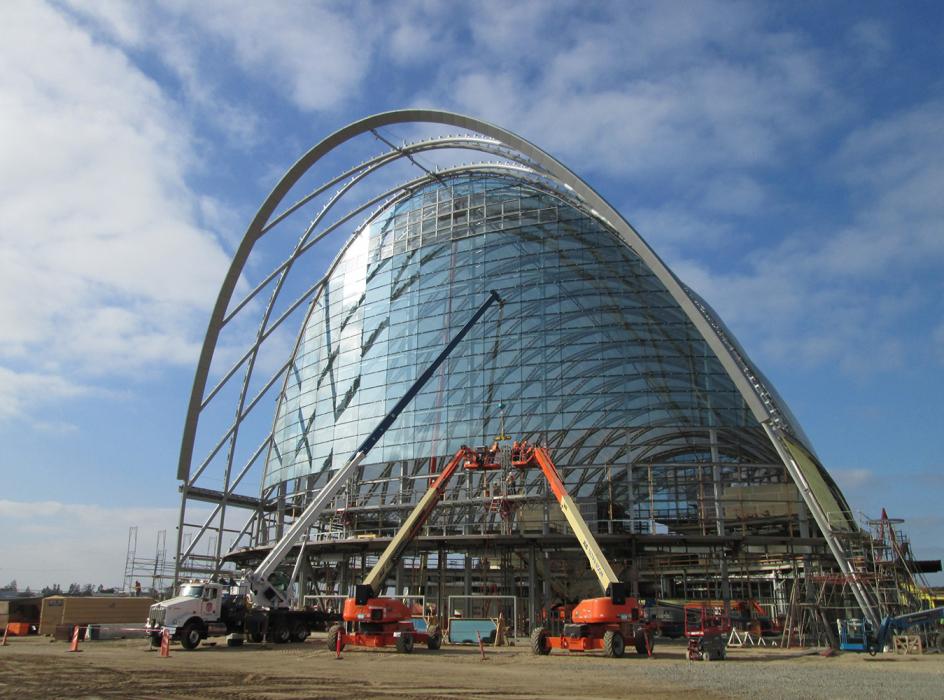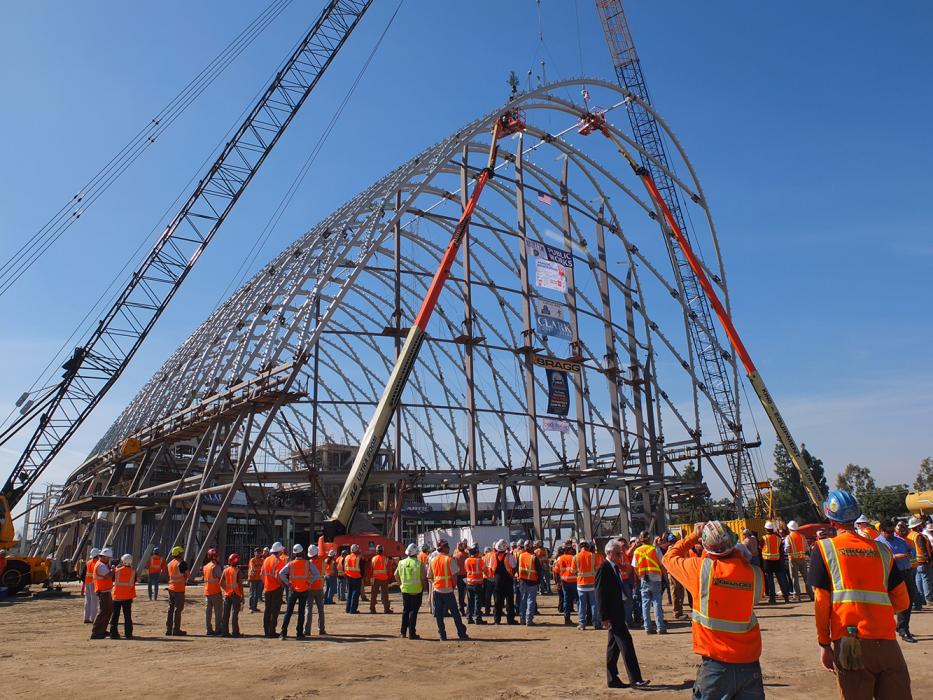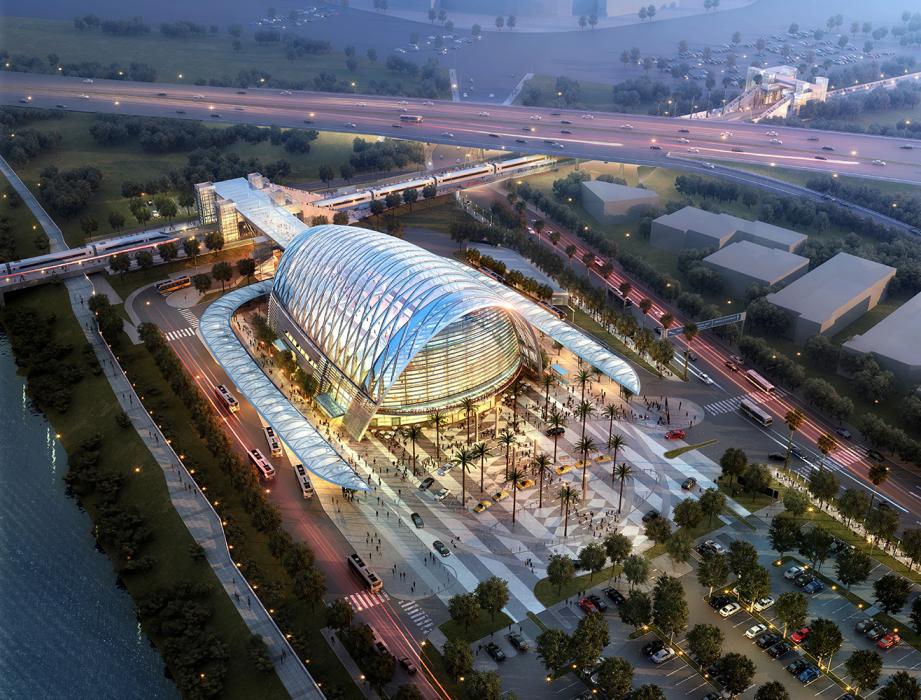Anaheim Regional Transportation Intermodal Center (ARTIC), Phase One
The Anaheim Regional Transportation Intermodal Center (ARTIC) is as beautiful as it is functional.
Overview
The Anaheim Regional Transportation Intermodal Center (ARTIC) in Anaheim, California is as beautiful as it is functional. A hub for rail, bus, auto and bike travel, ARTIC is also ready for high-speed trains and street cars, the region’s next-generation transportation systems.
The structure includes a 68,000-square-foot terminal and the Metrolink / Amtrak concourse pedestrian bridge. The terminal houses a grand hall, ticketing and retail space beneath a soaring exposed steel structure enclosed with inflated ETFE cushions – the largest single installation structure enclosed with ETFE in the Western United States.
We served as the Structural Engineer-of-Record for Phase I for the complex and also provided façade consulting services during the competition and early architectural design phases.
Highlights
- Our structural design employed long pieces of 14-inch-diameter curved, interlocking steel tubes to form the complex yet efficient structure’s diagrid shell to support the ETFE cushions and help accommodate bending and compression.
- This steel shell is clearly visible through the façade, creating a variety of impressive visual effects. The shell serves not only as a structural element but also as an architectural element and an iconic regional landmark.
- The transit center was designed to achieve LEED Platinum certification by incorporating initiatives including energy and potable water consumption reduction, stormwater runoff, construction, operational waste, air emissions reduction, optimization of climate conditions and open space areas.


